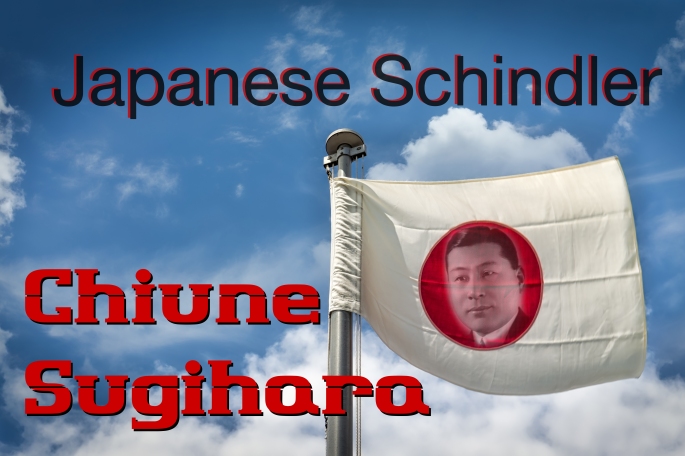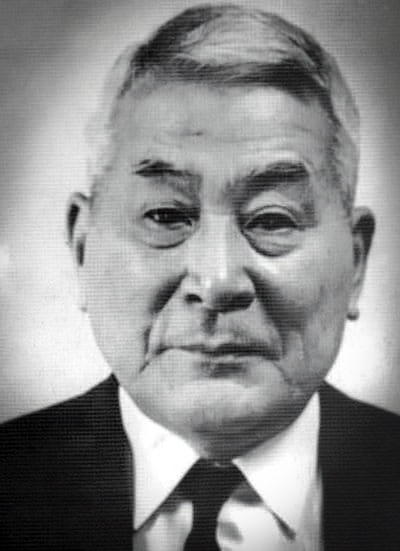
While not a fan of Facebook, it’s a good place to post photos of my kids for family to view, a place to keep up on what family and friends are doing, and for getting my photography out there. However, beyond that, I really don’t enjoy it much. I find out about most things there because my wife sees something and tells me. Honestly, I like Instagram where people just seem nicer, that’s a bit strange as well because I don’t know most of the people I follow there. Just post a personal opinion on Facebook and watch how many of your friends suddenly become subject matter experts, Facebook lawyers, Facebook MD’s, and Facebook Political Experts. In less time than you can have a pizza delivered to your front door you’ll see a side of people you didn’t know they had. However, every now and then there’s something incredible like the video of Sir Nicholas Winton being surprised on a BBC Program called That’s Life surrounded by some of the 669 mostly Jewish children now grown up that he’d saved during the Holocaust. If a video like that doesn’t get to you, nothing will. Recently, a Facebook post was forwarded to me by my wife, it was historical and she thought I’d like it. It was about a Japanese man the article claimed was the “Japanese Schindler.” It claimed he saved some 6,000 Jews during the Holocaust, five times more than attributed to Oskar Schindler, the subject of the famous 1993 movie Schindler’s List. If everything in the article were true, it seemed to me that Hollywood had made a movie about the wrong person. Believe me when I say I love history and read about it plenty, but also trust me that you could fill an encyclopedia from A through Z on what I don’t know. It’s a vast subject; however, it seemed that something this big would be more well known.
The Facebook post, while having a few embellishments, I came to discover was mostly true so I began to read more about this incredible man named Chiune Sugihara. It turns out there had been a movie about Mr. Sugihara entitled, Persona Non Grata in 2015 and a PBS film as well, Sugihara: Conspiracy of Kindness. Chiune Sugihara “was born to a middle-class family in Japan’s Gifu Prefecture on the main Japanese Island of Honshu on January 1, 1900. Sugihara was also called “Sempo,” which was “an earlier rendition of the Japanese character for part of his formal name.”(1) Chiune, or Sempo, “graduated from high school with top marks.” He later studied English at the Waseda University paying for his “education with part-time work as a longshoreman and tutor.” Chiune spotted a classified ad in which “the Japanese Foreign Ministry was seeking people who wished to study abroad and might be interested in a diplomatic career.” After passing the entrance exam, he went to the Japanese language Institute in Harbin, China where he studied Russian, graduating with honors, and converting to Greek Orthodox Christianity in the process. Harbin, also then called ‘the Oriental Paris,’ opened Chiune’s eyes to the rest of the world. From Harbin he took on a role “with the Japanese-controlled government in Manchuria” and was “promoted to Vice Minister of the Foreign Affairs Department.” This job put him “in line to be the Minister of Foreign Affairs in Manchuria.” While in this job, Chiune “negotiated the purchase of the Russian-owned Manchurian railroad system by the Japanese” and “saved the Japanese government millions of dollars” but had ” infuriated the Russians.” However, as a sign of things to come, Chiune was “disturbed” by the Japanese government’s policies, the “cruel treatment of the Chinese,” and with that he “resigned his post in protest in 1934.” In 1938 Chiune Sugihara was sent for duty at the Japanese diplomatic office in Helsinki, Finland and by 1939 the Japanese government posted him in Kaunas, Lithuania “to open a one-man consulate” before the opening days of World War Two in September 1939. In late 1939, now the Vice-Consul for the Japanese Empire in Kaunas, Chiune had a random meeting with an 11 year old boy named Solly Ganor in a store. During their conversation, young Solly invited Mr. Sugihara to his family’s celebration of the first night of Chanukah. Chiune, and his wife Yukiko, accepted and spent that night with young Solly’s family with Chiune being touched by “the closeness of the Jewish families and how it reminded him of his family, and of similar Japanese festivals.”
While in Kaunas, part of Chiune’s job was to “report on Soviet and German war plans.” Once war broke out “the Soviet Union annexed Lithuania” and “ordered all consulates to be closed. Sugihara was almost immediately flooded “with the requests of thousands of Polish Jews fleeing German-occupied Poland.(1) As Nazi forces invaded Poland, waves of Jewish refugees “streamed into Lithuania,” traveling “without possessions or money” and bringing “with them chilling tales of German atrocities against the Jewish population” in Poland. The Lithuanian Jews “continued living normal lives” until the Soviets invaded Lithuania on June 15, 1940 ” At that point things began to worsen and “it was now too late for the Lithuanian Jews to leave for the East.” However, the Soviets “would allow Polish Jews to continue to emigrate out of Lithuania through the Soviet Union if they could obtain certain travel documents.” Thousands of Jewish refugees headed to Kaunas and began to line up outside the gates of the Japanese Consulate building. On a “summer morning in late July 1940,” Vice-Consul Sugihara and his family were “awakened to a crowd of Polish Jewish refugees” at the Consulate gates who were “desperate to flee the approaching Nazis.” They understood well “that their only path lay to the east” and only “if Consul Sugihara would grant them Japanese transit visas.” Their lives were literally in his hands as documents from Sugihara meant “they could obtain Soviet exit visas and race to possible freedom.” Sugihara “was moved by their plight, but he did not have the authority to issue hundreds of visas” on his own without permission from his bosses in Tokyo. He “wired his government three times for permission to issue visas to the Jewish refugees” but was denied each time. Finally, Chiune discussed “the situation with his wife and children” because this was “a difficult decision to make.” He had been “brought up in the strict and traditional discipline of the Japanese.” He was conflicted, while he was a career diplomat who “was bound by the traditional obedience he had been taught all his life,” he was also “a samurai who had been told to help those who were in need.” If he signed the visas, Chiune would likely “be fired and disgraced, and would probably never work for the Japanese government again” resulting in “extreme financial hardship for his family in the future.” Everything he had worked for would be gone. In the end, Chiune and Yukiko Sugihara knew what they had to do, while they “feared for their lives and the lives of their children,” they knew they “could only follow their consciences” and that the “visas would be signed.” These visas were called ‘Visas for Life.’
The decision made by the Sugihara’s to defy the Japanese government was made with no regard for their personal costs and from July 31 to August 28, 1940, the Sugihara’s “sat for endless hours writing and signing visas by hand. Hour after hour, day after day, for these three weeks, they wrote and signed visas.” They produced “over 300 visas a day, which would normally be one month’s worth of work for the consul. Yukiko also helped him register these visas.” During this time Chiune “did not even stop to eat. His wife supplied him with sandwiches. Sugihara chose not to lose a minute because people were standing in line in front of his consulate day and night for these visas. When some began climbing the compound wall, he came out to calm them down and assure them that he would do is best to help them all.”(2) Over a six week period in the summer of 1940, Sempo “worked 18-hour days, eventually writing out by hand 2,139 transit visas – a record only discovered years later in the archives of Japan’s foreign ministry.(3) “Hundreds of applicants became thousands” and Chiune worked hard to “grant as many visas as possible before being forced to close the consulate and leave Lithuania.”(2) Because Sugihara spoke fluent Russian, he was able “to bargain with Moscow to ensure the Jewish refugees had safe passage through the Soviet Union, as well as the right to leave Vladivostok for Japan. The promise of hard currency earned from the sale of refugees’ travel documents helped the Politburo reach its decision in July 1940. Stalin signed the order approving transit for refugees, which the Soviet document said included Jewish religious (yeshiva) teachers and students, salesmen, lawyers and other liberal professions.” And with that, the Sugihara’s had done all they could do.
Sugihara departed for Berlin on September 1, 1940 and later, during “Soviet army’s march though the Balkans in 1944, the Soviets arrested Sugihara together with other diplomats from enemy nations. Soviet authorities held him and his family, under fairly benign conditions, for the next three years. When Sugihara returned to Japan in 1947, the Foreign Ministry retired him with a small pension as part of a large staff reduction enacted under the American occupation.(3) After the war, Chiune Sugihara moved his family to Fujisawa, Japan and “to support his family he took a series of menial jobs, at one point selling light bulbs door to door.” It turned out that the Sugihara’s were correct in their assumptions some seven years earlier as Chiune’s training and promising diplomatic career were gone. In 1947, “his youngest son, Haruki, died at the age of seven, shortly after their return to Japan.” Sugihara “later began to work for an export company as general manager of a U.S. Military Post Exchange. Utilizing his command of the Russian language, Sugihara went on to work and live a low-key existence in the Soviet Union for sixteen years, while his family stayed in Japan.”(4) Today, “beyond the record of 2,139 names Sugihara filed belatedly to Tokyo months after issuing visas, there is no certainty over how many lives were saved.” Estimates of 6,000 people “comes from assuming each holder of a transit visa travelled with two other people, a wife and child. Other researchers have suggested that 10,000 people were saved.” While Sugihara was recognized by Israel during his lifetime, and his fame grew outside of Japan, he remained a humble man with only a few of the refugees finding him in Japan to thank him. “Despite the publicity given him in Israel and other nations, he remained virtually unknown in his home country. Only when a large Jewish delegation from around the world, including the Israeli ambassador to Japan, attended his funeral, did his neighbors find out what he had done.”(5) Chiune Sugihara died at a hospital in Kamakura, Japan on July 31, 1986. While there is no possible way to know the exact number of people saved by Vice-Consul Sugihara, it is estimated that 100,000 people are alive today because their descendants were issued his Visa for Life during the summer of 1940. (6)
Researching and writing this was a labor of love. Thanks to whoever got this man on Facebook where my wife spotted it. Mr. Sugihara was a rare human being who did the right thing, which was not easy. Not only did the Sugihara’s perform such a great deed that summer, they told practically nobody in Japan; Chiune and Yukiko were the epitome of humble. Finally, When I saw that Chiune and Yukiko Sugihara were buried at the Kamakura Cemetery near where we live in Japan, I had to pay respects to these incredible human beings. Getting to the cemetery was easy, finding the grave was not. In the end, we walked a few miles and thankfully four cemetery employees helped us find Mr. and Mrs. Sugihara’s grave. One of the men offered to take a photo of us by his grave, something I hadn’t planned on. While I do shoot gravestones, I don’t shoot them as a sort of tourist shot and try to be very respectful of my surroundings with a camera. The Sugihara’s were definitely humble people, humble in death as well. Their gravesite is also humble, ordinary in fact, so ordinary that we walked by it once without noticing. When people used to ask me, “if you could go back in time and meet anyone, who would it be?” I used to say it was Louis Armstrong that intrigued me, now it would definitely be Mr. Chiune Sugihara. He gave up practically everything to help people he didn’t know during the summer of 1940 and remained humble for the rest of his life.
“Even a hunter cannot kill a bird which flies to him for refuge. Do what is right because it is right; and leave it alone. I had to do something.”
– Chiune “Sempo” Sugihara

Works Cited:
1. Holocaust Encyclopedia, United States Holocaust Museum, 1980. https://encyclopedia.ushmm.org/content/en/article/chiune-sempo-sugihara Accessed January 6, 2021.
2. Jewish Virtual Library: A Project of AICE. American-Israeli Cooperative Enterprise, 1997. https://www.jewishvirtuallibrary.org/chiune-sugihara Accessed January 6, 2021.
3. Rankin, Jennifer. My father, the quiet hero: how Japan’s Schindler saved 6,000 Jews. London: 2020. https://www.theguardian.com/world/2020/jan/04/chiune-sugihara-my-father-japanese-schindler-saved-6000-jews-lithuania Accessed January 6, 2021.
4. Sugihara, Seishiro (2001), Chiune Sugihara and Japan’s Foreign Ministry, between Incompetence and Culpability. Lanham, MD: University Press of America.
5. Lee, Dom; Mochizuki, Ken (2003). Passage to Freedom: The Sugihara Story. New York: Lee & Low Books. ISBN 978-1-58430-157-8.
6. Liphshiz, Cnaan (23 May 2019). “Holocaust hero Chiune Sugihara’s son sets record straight on his father’s story”. Times of Israel. Retrieved 09 January 2021.






